M/E/A/N/I/N/G
Online
#2
Recipes for Time-Base Art
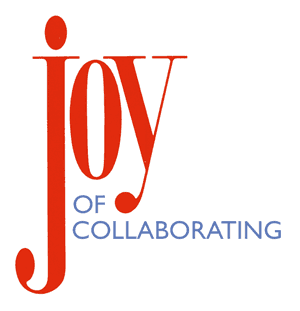 |
One of the few things that matches our joy and excitement in making art together is our interest in foods and sharing them with our friends.
Like most things, the success of a satisfying collaboration, though sometimes a mysterious and hermetic process, is due to its ingredients.
This is a recipe we've been working on for almost 20 years. It's not quite a difficult one, but does require patience, acceptance of growth, change, and the willingness to continually experiment with new concepts and materials.
Most of our work starts out with some of the following ingredients:
Artists Books
Performance
Poetry
Sculpture and Installation
Video
Over time, we've learned to combine these and elaborate on them like you would for a stew or complex sauce. In general the creative dishes from our practice go well with conceptual art, book art, installation art, and very often sculpture.
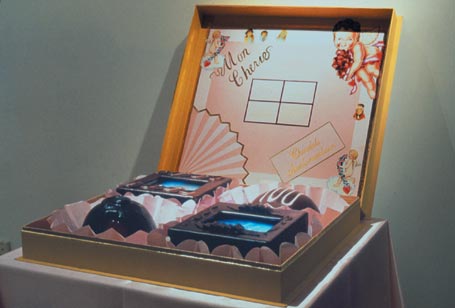 |
|
|
We have favorite ingredients, methods of cooking, and seasoning. We always use:
a little inspiration
a little frustration, leaving some for aesthetic reduction
a good deal of improvisation
and always a pinch of surprise.
The Perfect Egg
Since I had a mild allergy to eggs when I was a boy, I never learned what a versatile medium eggs were until I met Nora. She taught me that the best way to handle an egg was by poaching.
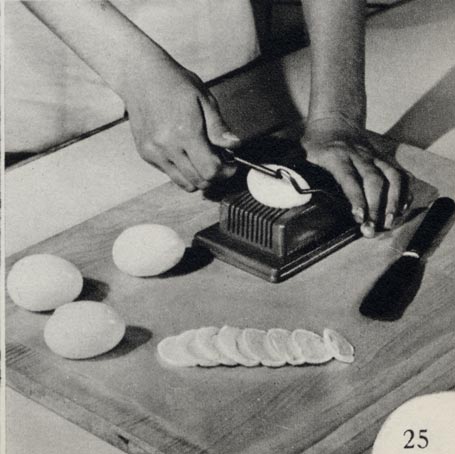 |
We both met in Baltimore in the late seventies. I had moved there from a student year in Europe, where I was studying poetry and came across Dutch, French and British sound and performance poets and a spectacular bookstore in Amsterdam called Other Books & So owned by the Mexican artist Ulises Carrion.
My visions of poetry, art, and music changed radically during this time in Holland. It was in Baltimore, though, that I really began to work with other artists in collaboration: publishing, writing and performance.
I met Marshall studying at the Maryland Art Institute. I was a painter, interested in public art and oil painting. I was influenced by German Expressionism. And began to work in sculpture and film. Eventually, this culminated in my making transparent books which combined the idea of light and the duration of time.
Marshall and I started working together through a performance poetry music group called CoAccident. And so we began collaborating, though not exclusively with each other, one on one, but collectively as part of a larger enterprise that we often characterized as an artistic machine.
The Meringue
It was only later, after meeting in CoAccident, when we discovered that Meringues are quintessentially 3-dimensional. They make a perfect vehicle for sculpture.
As CoAccident wound down, Nora and I started to collaborate on performances of our own. At this point she became involved with book art. Nora's pieces continued to deal with duration and time and they also began to be political. Our first two performances used book structures as props and as performance sets.
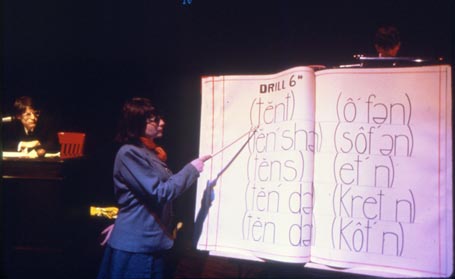 |
|
|
The first of these was a popup book and diorama. It was called Africa. The book opened up like a theater set, and I manipulated figures and unfolded the book structure while slides of images and text changed behind. The second performance, called Dyslexiology, had several book props, including a giant instruction book that we projected words into. This was the first time we actually performed on stage together.
As a logical extension of performance, I began to work in video. But before that, I was interested in studio audio recording and the metaphors and similarities between sound and video recording helped move me into video. I was also doing solo performances using environmental sounds, machine noise, mixed with drum and bass tracks.
In 1982, Marshall and I moved to Spain, where I did research as a Fulbright fellow (recently brought to life as an artist book—Turning Leaves of Mind, Granary Books, 2003).
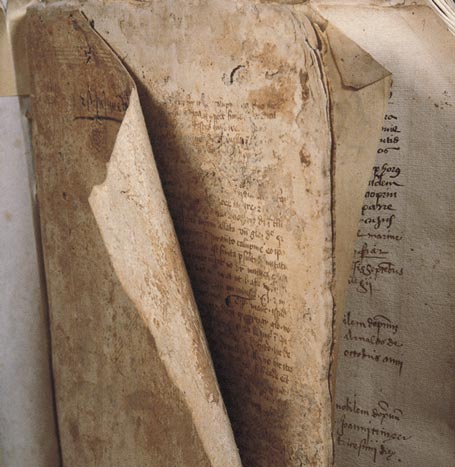 |
|
|
The Spanish Tortilla
This dish is archetypal, almost as characteristic of Iberia as flamenco. The way the eggs and potatoes emulsify together is sublime.
In Spain, we started working together on single channel videos. Our first tape together was called Talk Attacks and was about miscommunication. We shot, edited and performed in it. There were constant changes of scale and size, which has become a thread for us, and related directly to my painting and artist books.
When we moved to New York, in 1984, we continued to work in video and performance. Reel to Real, about the kidnapping of General Dozier, and Black Holes/Heavenly Bodies, about religion and media, combined pre-recorded and live video with the performance. (Squat Theatre's "Mr. Dead and Mrs. Free" was an important source as was the theater work of Tadeusz Kantor.)
Black Holes/Heavenly Bodies became a single channel videotape using live action with animated graphics. It was during the post-production of Black Holes/Heavenly Bodies, when there was a big breakthrough. Partly as a creative and immediate release, because the editing of Black Holes was such a complicated and long term process, we began making sculptural installations combining objects with video.
Lemon Curd
When cooked, the curd just barely coats the back of the spoon, not quite a custard. As the primary ingredient in a lemon meringue pie, it's the hardest to get right.Our first mistake was to cook it too much like a custard.
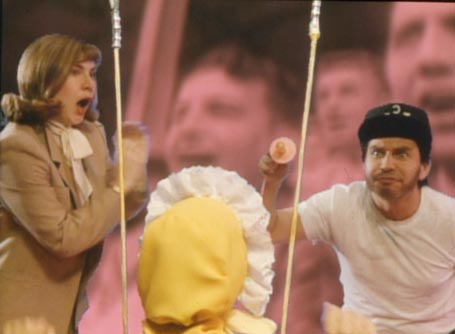 |
|
|
At first, these video sculptures incorporated books and other print media with video. They related to the transformation of the written word—how it is being changed by electronic media. Gradually these sculptural works have changed. They now revolve around aspects of time and we are always thinking about how old and new media interact.
Deviled Eggs
As with my grandmother's chicken salad, it was a sworn secret, never to be revealed, until, at least, after the meal. The secret, my mother would whisper holding a finger to her lip, "is in the mayonnaise."
In making our work, our personal artistic talents and contributions generally divide according to abilities. The conceptual development and planning, though, is very much a shared process. Our individual artistic practices have almost melded into one.
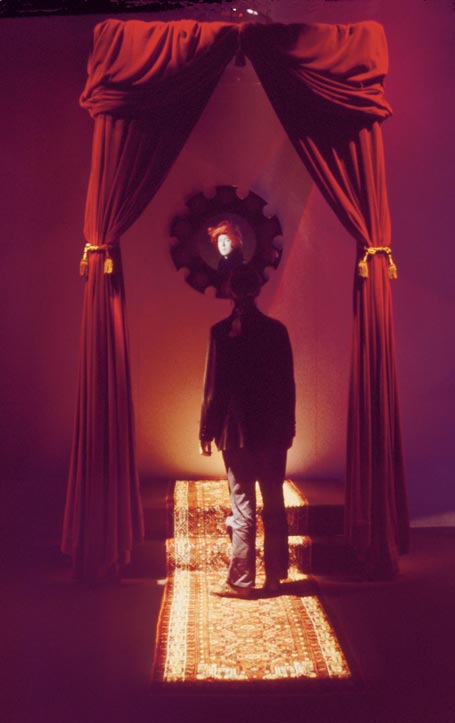 |
|
|
In 1992, Marshall and I collectivized our work even more intensively. We wanted to have an impact on politics, manipulate the media, and to be critical of the status quo; thus, we started, the series Pure Products of America. With this, we "synergize" the impact of the market how it works on contemporary American values of morality, religion and politics.
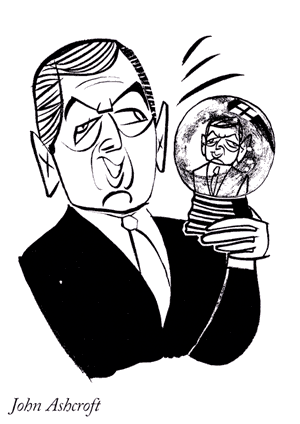 |
|
|
Our limited edition sculptures—products you can buy—are a type of detournement: infusing politics with the libidinal drives of the market.
In 2002, we launched our website. www.pureproductsusa.com is a retail site; it's a double entendre: the availability of our multiples online at the same time satirizes e-commerce and the commercialization of the internet.
Nora Ligorano and Marshall Reese collaborate on installations, videotapes, artists books, and limited edition multiples. Their work concerns the provenance and historicity of media and how technology affects society. Ligorano/Reese exhibit widely in the US and Europe and are working on several new installations.
| Table Of Contents: |
| 01. |